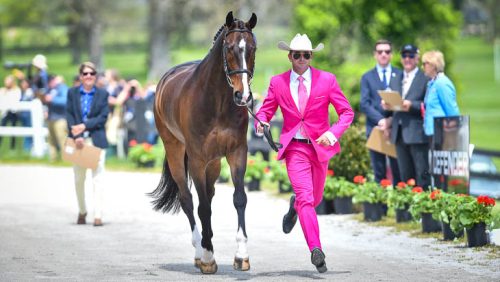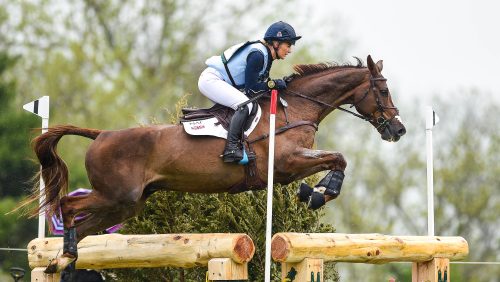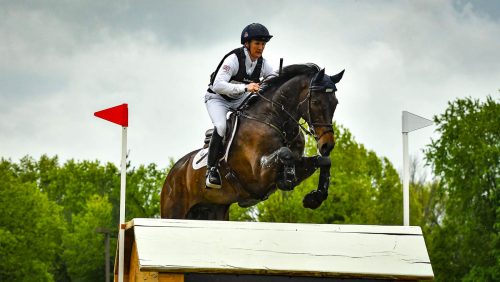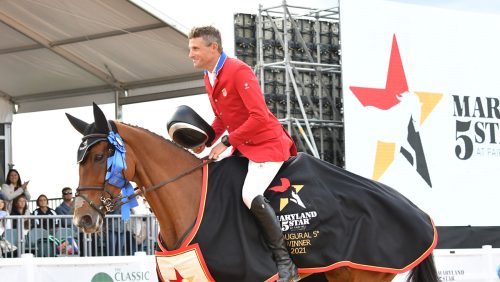When Malcolm Hook looks down sternly over his dark-rimmed reading glasses and prompts everyone to “make a concerted effort” to do something, it’s not taken lightly.
Hook, the U.S. Equestrian Federation Eventing Technical Committee Chairman, opened the first full day of action at the U.S. Eventing Association Annual Meeting and Convention in Reston, Va., today, Dec. 3, with an open session of his committee.
Debate on a competitive double standard—or the misconception of one—ensued during a discussion on the popular training level three-day event program. Committee member D.C. McBroom mentioned that although the program is hailed as an educational experience, some riders are missing the message about the hazards of over-competing their horses.
McBroom said she’d recently become aware of one horse that had completed 23 competitions this year, and another that had contested a training level three-day and then immediately gone to a preliminary horse trial.
Committee appointed athlete Bobby Costello and USEA President Kevin Baumgardner expressed wholehearted agreement after Hook asked that the USEA “make a concerted effort to educate on this issue.”
But when international superstars like British rider Oliver Townend appear to be running their horses more than ever at the top levels of the sport, it sends a mixed message to up-and-coming eventing enthusiasts. Townend placed eighth at the Rolex Kentucky CCI**** in April, won the Burghley CCI**** (England) in September and then contested the Pau CCI**** (France) in October, all on Carousel Quest.
USEF Eventing Chef d’Equipe Mark Phillips stepped in to explain that many coaches are changing their theories on four-star fitness. He said British coach Yogi Breisner even considered sending Carousel Quest to the HSBC FEI European Eventing Championships, three weeks after Burghley.
“The recovery period is so much quicker than it used to be when we had endurance,” Phillips said. “It’s much more like a race horse, which maintains a higher level of fitness throughout the year and peaks maybe once a month, instead of twice a year. I’m absolutely convinced that the horse has got to be just as fit today, if not fitter, than before.”
Phillips noted that many European horses are able to maintain that fitness because they’re training and competing on superior footing compared to much of what’s in the United States.
ADVERTISEMENT
This apparent double standard leaves eventing officials with the daunting task of educating less experienced riders and promoting horse welfare.
“We have to be careful to not create a false perception,” said committee member Roger Haller. “We have to be very careful to stress that the horse’s fitness has to be maintained.”
The Watch List: Dormant, But Effective
Last year’s major push for education was manifested in the USEF Eventing Watch List, and Hook moved the discussion of that program, which was originally slated for the closed session of the committee meeting, to the open portion to get the word out that the program is working.
Committee members seemed unanimously agreed on the effectiveness of the Watch List—even though there’s no one on it.
USEF Managing Director of Eventing Sara Ike said Watch List Reporting Agents cited five instances of dangerous riding this year. But all five were dealt with on a personal level with the riders, and none were actually put on the List. The instances occurred at Rocking Horse (Fla.), Poplar Place (Ga.), Twin Rivers (Calif.), Copper Meadows (Calif.) and Rebecca Farm (Mont.).
“The existence of the Watch List in and of itself is a very successful tool,” said Hook, stressing that it was never designed to be a long roster. “When we initiated [it], Mark never expected more than three or four, or maybe five or six people being on it.”
“We need to keep the Watch List on the agenda for the officials,” Phillips agreed. “The system is working.”
Several members of the committee also expressed the opinion that EV105, the loss of qualification rule, has effectively bumped shaky riders down a level and kept them off the Watch List.
ADVERTISEMENT
USEA CEO Jo Whitehouse also reported that as opposed to last year, when there were 30 total instances of dangerous riding recorded across the country, there were only 13 this season.
Shamateurs
Mike Huber raised the issue of amateur status confusion, citing the Chronicle’s Confused About Amateur Rules? story from Nov. 13.
Through either accidents or blatant disregard for the amateur status rule, several professional riders have appeared on the USEA’s Leading Amateur list and won amateur awards at events across the country this year.
“I just want this group to be aware that the general membership of the USEA is a little pissed off,” Huber said. “They’re thinking why are these people on these lists, and why do we have lists if they’re not accurate?
“It makes the USEA look bad when they have amateurs on the board, and it’s hard for the USEF to prosecute them, and our credibility as professionals is in jeopardy when it seems to the public that we have cheaters among us. I think as a group we should think about how to address this.”
A Pinney For Your Thoughts
The halls of the Reston Town Center Hyatt are also abuzz with talk of impending cross-country pinney redesign.
With the advent of new inflatable cross-country safety vests on the market for the 2010 season, riders and officials are now faced with the problem of traditional number pinneys constricting the vests. Because the ties don’t give when the vests inflate upon impact, they have the potential to cause internal damage by constricting the rider’s body.
John Nunn, owner of Bit Of Britain and Nunn Finer products, has commissioned several prototypes for new pinneys, some of which have elastic or other flexible ties. Many organizers are encouraging the sale of permanent pinneys, which riders would simply change the numbers in each weekend.
Others, however, contend that it should be the responsibility of the vest manufacturers to make their product compatible with the pinneys currently in use.














